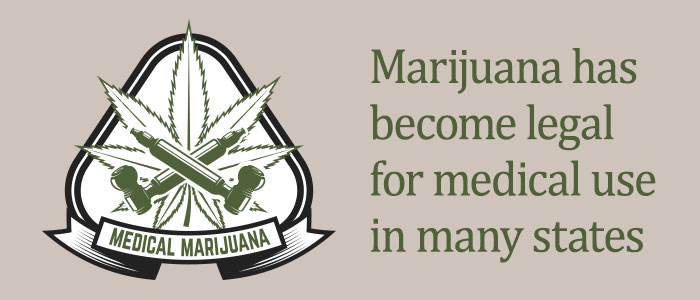
With the legalization of medical marijuana in 29 states as of April 2017, the question of whether marijuana is a good treatment for glaucoma has resurfaced.
Glaucoma is a common eye disease that affects the optic nerve and results in loss of peripheral vision. The treatment for glaucoma is to lower the pressure - intraocular pressure - inside the eye. This can be accomplished by laser, eye drops, or surgery.
The idea that marijuana can be used to treat glaucoma dates back to the 1970s. Smoking marijuana does lower intraocular pressure but the effect lasts only 3-4 hours. In order for marijuana to be an effective treatment, a person would have to smoke marijuana every 3 hours. Since marijuana also has psychoactive effects, consistently smoking it could prevent a person from performing at maximum mental capacity, and frequent use can cause problems with short-term memory.
Marijuana not only lowers intraocular pressure but also blood pressure and blood flow throughout the body. There is, however, evidence that decreased blood flow to the optic nerve may cause further damage. Therefore, it is possible that the lower intraocular pressure is negated by the decreased blood pressure to the eye.
Other ways of administering the active ingredient of marijuana, tetrahydrocannabinol (THC), include oral and topical administration. These forms avoid the potentially harmful compounds that could damage the lungs from marijuana smoke. However, the oral form would not avoid the systemic effects of marijuana.
There has been a research program that enrolled nine patients to take either oral THC or inhaled marijuana. None of the patients could sustain treatment for more than 9 months due to side effects such as distortion of perception, confusion, anxiety, depression, and severe dizziness. (https://www.ncbi.nlm.nih.gov/pubmed/12545695)
Alternatively, though eye drops may potentially avoid systemic effects, there is no formulation currently available to introduce a sufficient amount of the active ingredient into the eye.
The position by the American Glaucoma Society and American Academy of Ophthalmology is that marijuana is not recommended in any form for treatment of glaucoma at the present time.
Article contributed by Dr. Jane Pan
This blog provides general information and discussion about eye health and related subjects. The words and other content provided in this blog, and in any linked materials, are not intended and should not be construed as medical advice. If the reader or any other person has a medical concern, he or she should consult with an appropriately licensed physician. The content of this blog cannot be reproduced or duplicated without the express written consent of Eye IQ.
 Just like adults, children need to have their eyes examined. This need begins at birth and continues through adulthood.Following are common recommendat...
Just like adults, children need to have their eyes examined. This need begins at birth and continues through adulthood.Following are common recommendat...


